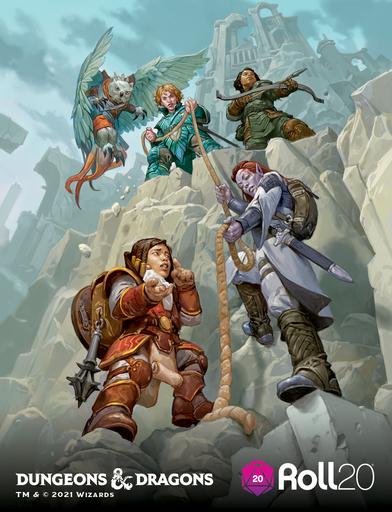Strixhaven: A Curriculum of Chaos brings the Strixhaven set of Magic: The Gathering cards to D&D. It seems reasonable to think that the real “official” description of Arcavios is found more in MtG than it is D&D. (The fact that, in porting something from a game in which color is everything, they forgot to actually list the colors, is perhaps telling here—they pretty much assumed everyone would already be familiar with the setting from MtG.)
So this question can, I think, be most clearly answered by going to the MtG authority on the subject, “A Planeswalker’s Guide to Strixhaven,” published on wizards.com. This goes through the colors and their significance at length, but to summarize:
| College |
Color & Significance |
Color & Significance |
| Silverquill |
 White: Inspiration White: Inspiration |
 Black: Harsh truths Black: Harsh truths |
| Prismari |
 Blue: Artistic technique Blue: Artistic technique |
 Red: Emotional truth Red: Emotional truth |
| Witherbloom |
 Black: Death, decay Black: Death, decay |
 Green: Life, growth Green: Life, growth |
| Lorehold |
 Red: Adventure Red: Adventure |
 White: History White: History |
| Quandrix |
 Green: Bringing theory to life Green: Bringing theory to life |
 Blue: Abstract theory Blue: Abstract theory |
If you are unfamiliar with Magic: The Gathering, the magic comes from mana and mana comes in five colors ( White,
White,  Blue,
Blue,  Black,
Black,  Red,
Red,  Green). Each color of mana has its own strengths and weaknesses, so the colors represent the different types of magic found in the game, and the type of person who excels with that kind of magic. For the Adventures in the Forgotten Realms crossover set of Magic cards, they made a card representing each PHB class, e.g.
Green). Each color of mana has its own strengths and weaknesses, so the colors represent the different types of magic found in the game, and the type of person who excels with that kind of magic. For the Adventures in the Forgotten Realms crossover set of Magic cards, they made a card representing each PHB class, e.g.  cleric,
cleric,  wizard,
wizard,  warlock,
warlock,  barbarian, and
barbarian, and  druid, which gives a D&D player a pretty good sense of what each color’s about. The colors are arranged in a ring (in
druid, which gives a D&D player a pretty good sense of what each color’s about. The colors are arranged in a ring (in 



 order, with
order, with  coming back around to be before
coming back around to be before  ), and adjacent colors (e.g.
), and adjacent colors (e.g. 
 or
or 
 ) being considered “allies,” and colors across from one another (e.g.
) being considered “allies,” and colors across from one another (e.g. 
 or
or 
 ) being “enemies.” Strixhaven represents each of the 5 “enemy pairs” of colors, which is why the write-up emphasizes the “dichotomy” of each college. Note that what a color means to a given college is what that college focuses on particularly—you’ll note each color is used by two colleges, that see the color differently.
) being “enemies.” Strixhaven represents each of the 5 “enemy pairs” of colors, which is why the write-up emphasizes the “dichotomy” of each college. Note that what a color means to a given college is what that college focuses on particularly—you’ll note each color is used by two colleges, that see the color differently.
For the sake of posterity (and backing it up), descriptions of each college’s colors from the “Planeswalker’s Guide.”
The Dichotomy of Silverquill

This section explores the opposing beliefs and magics that make up Silverquill. For any college, a mage can also embody both colors of magic, combining aspects and spells into a unique identity.
White
The white side of Silverquill is about using the power of language to uplift and inspire their allies and shine light on the evils of society. […]
Black
The black side of Silverquill is about the power of language to point out stinging truths and attack their rivals. […]
The Dichotomy of Prismari

Blue
The blue side of Prismari deals with artistic training and study, visualization, precise technique, and artistic theory. […]
Red
As with blue, many red-aligned Prismari mages are some flavor of elementalist. […]
The Dichotomy of Witherbloom

Black
Black mages of Witherbloom focus on exploiting life energy for their powerful witchcraft. […]
Green
Green mages of Witherbloom focus on encouraging life energy to blossom and grow. […]
The Dichotomy of Lorehold

Red
The red mages of Lorehold gravitate toward reckless discovery and the spirit of adventure in their research of the past: the essence and emotion of history over precision or procedure. […]
White
Antiquarians, truthfinders, and archaeoscribes love to uncover and record the past; they're often surrounded by lengthy scrolls and tomes in which they chronicle historical truths for posterity. […]
The Dichotomy of Quandrix

Green
The green side of Quandrix is focused on bringing numerical possibilities to life, creating physical reality out of mathematical possibilities. […]
Blue
The blue side of Quandrix attracts those who delve into the abstract realms of theory, conjecture, and possibility. […]


 White: Inspiration
White: Inspiration Black: Harsh truths
Black: Harsh truths Blue: Artistic technique
Blue: Artistic technique Red: Emotional truth
Red: Emotional truth Green: Life, growth
Green: Life, growth




